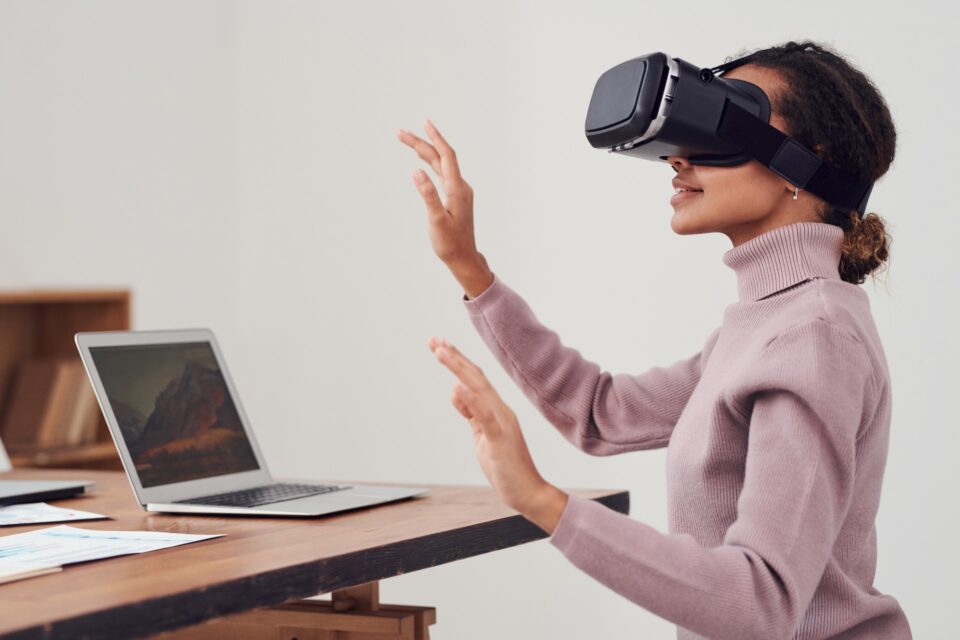Augmented reality (AR) is one of the most popular technology fads right now, and it’ll only become more popular as AR-capable smartphones and other devices become more widely available. AR allowed us to view the real-world environment right in front of us—trees swaying in the park, dogs chasing balls, children playing soccer—with a digital augmentation superimposed on top of it. A pterodactyl, for example, might be seen landing amid the trees, canines mingling with their cartoon counterparts, and children kicking past an alien spacecraft on their way to score a goal.
These examples are not that dissimilar to what might already be accessible on your smartphone. In fact, augmented reality is widely available and being used in a range of applications, including Snapchat lenses, apps that help you find your car in a congested parking lot, and a variety of shopping apps that allow you to try on things without leaving your house.
The mobile app Pokemon Go, which was introduced in 2016 and rapidly became an inescapable sensation, is perhaps the most renowned example of AR technology. Pokemon figures appear in the real world—on your sidewalk, in a fountain, even in your own bathroom—and gamers must identify and capture them.
Types of Augmented Reality
There are various forms of augmented reality technology that are appropriate for various jobs. The following are the two main types of AR:
Marker Based AR

Specific physical images (markers) acquired by the camera are used to trigger marker-based AR apps, which put digital material on top of them. An object or a picture, such as logos, posters, or QR codes, can be used as a marker. A marker-based AR is demonstrated in the video below. The business card serves as a marker for the AR app, which shows additional digital information when it comes into contact with it.
Markerless AR:

Markerless AR does not rely on markers and allows users to choose where the digital content is displayed. The camera, GPS, compass, and accelerometer of the device are used to obtain information about the environment in markerless AR apps.
Uses and Benefits in other areas:
- Augmented reality is used in enhanced navigation systems to superimpose a route over a live image of the road.
- Broadcasters utilize augmented reality (AR) to draw lines on the field during football games to illustrate and analyze plays.
- IKEA, the Swedish furniture and homewares retailer, has developed an augmented reality (AR) software called IKEA Place that allows you to preview how a piece of furniture will appear and fit in your room.
- Military fighter pilots view an augmented reality projection of their altitude, speed, and other data on their helmet visor, eliminating the need to squander concentration by glancing down.
- An AR projection of a 3-D brain is occasionally used by neurosurgeons to assist them during procedures.
Drawbacks and Future of AR

There are still some obstacles to overcome with augmented reality. People may not want to rely on their smartphones, for example, because they have small screens on which to superimpose information. Wearable gadgets such as augmented-reality contact lenses and spectacles will provide users with more convenient, wider views of the world around them as a result. The lack of screen real estate will no longer be a problem. You may be able to play a real-time strategy game on your computer in the near future, or you may be able to invite a friend over, put on your AR glasses, and play on the tabletop in front of you.
There is such a thing as having too much data. Over Reliance on augmented reality, like smartphone and internet addictions, could lead to people missing out on what’s right in front of them. Even though a tour guide may be able to provide a degree of connection, experience, and personal touch unavailable in a computer programme, some consumers may opt to use their AR iPhone applications rather than an experienced tour guide. And there are instances when a physical plaque on a structure is better than a virtual one, which would only be accessible to those with specific technological capabilities.
There are also issues about privacy. Image-recognition software combined with augmented reality will soon allow us to aim our phones at strangers and view information from their Facebook, Twitter, Amazon, LinkedIn, and other online profiles. People actively provide information about themselves on most of these services, but it might be an unexpected shock to meet someone and have him suddenly know so much about your life and history.
Consider the possibilities, despite these reservations: Simply pointing your AR-enabled phone at a local park or building could teach you anything about the city you’ve lived in for years. If you work in construction, utilizing virtual markers to specify where a beam should go or which structural support to inspect can save you money on materials. Paleontologists working in shifts to assemble a dinosaur skeleton could leave virtual “notes” to team members on the bones, artists could create virtual graffiti, and doctors could add realism to a mannequin by overlaying a computer image of a patient’s X-rays.
We’ll see a variety of AR-enabled apps in the future. Companies will surely continue to release basic products like Dixie Cups’ AR toothbrushing game, which teaches youngsters basic brushing skills. Simultaneously, businesses, research institutions, and others will seek out innovative ways to make individuals more productive in the face of an older population. All of these tools will aid in advancing AR’s acceptance and capabilities along this unexplored technological road.




